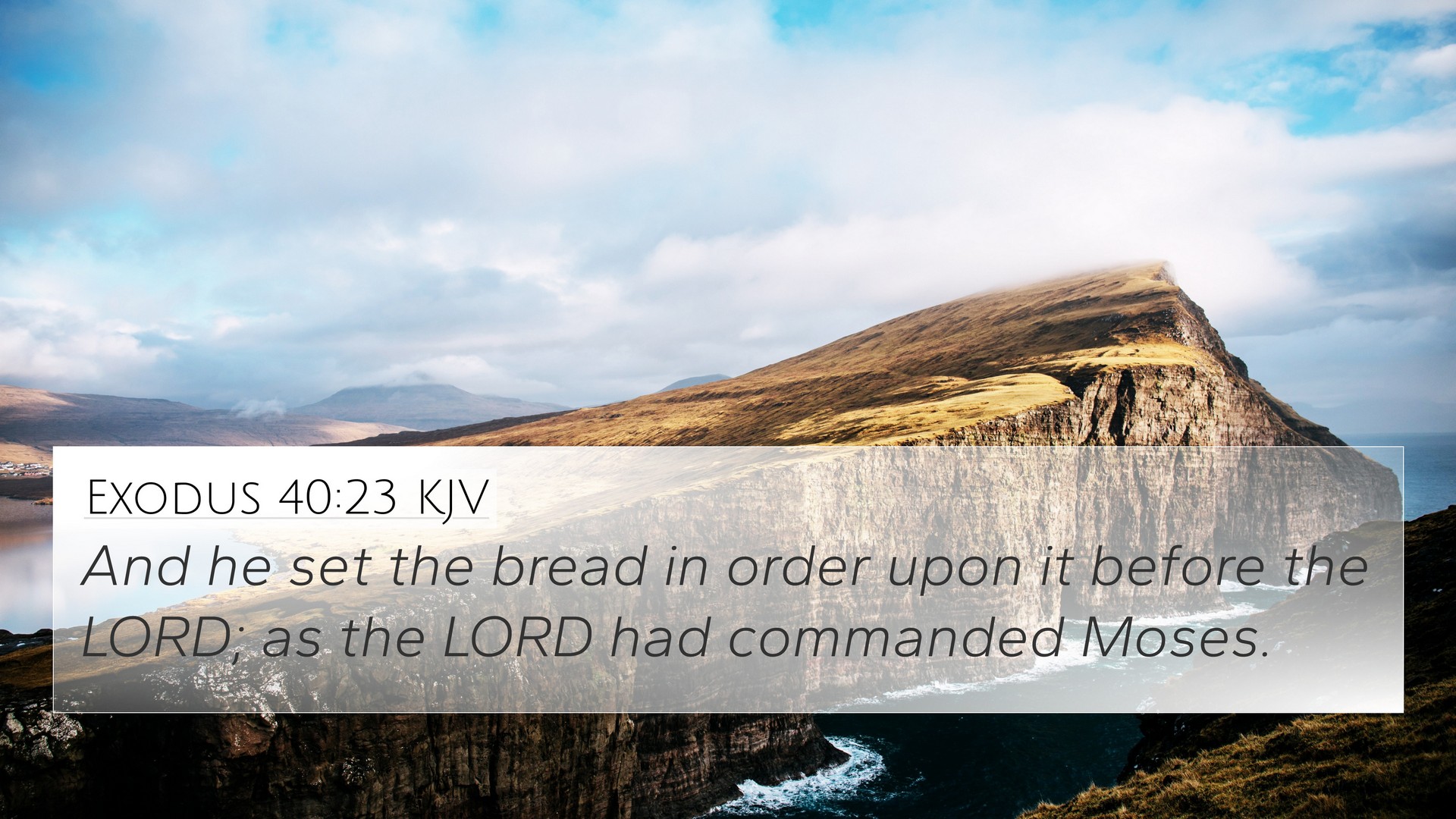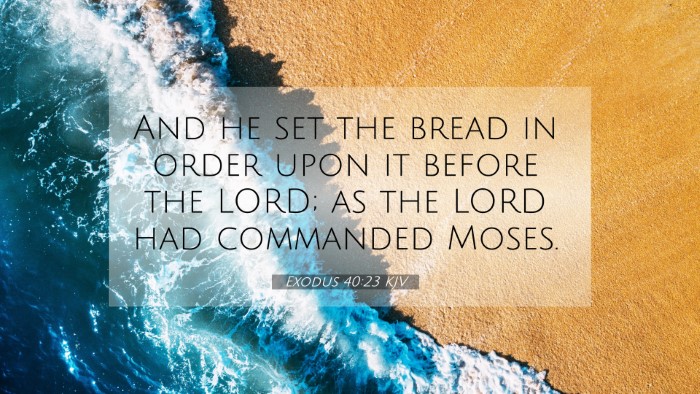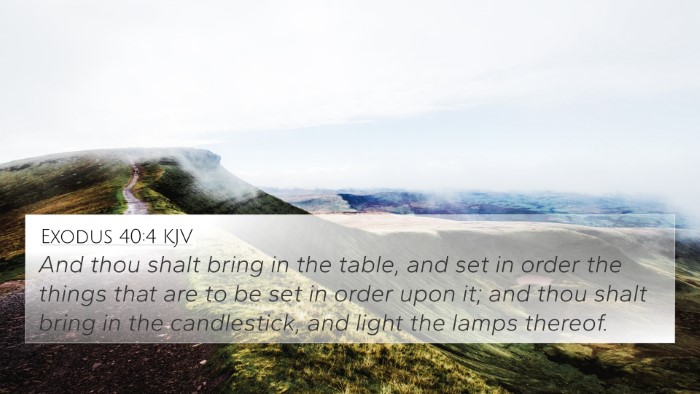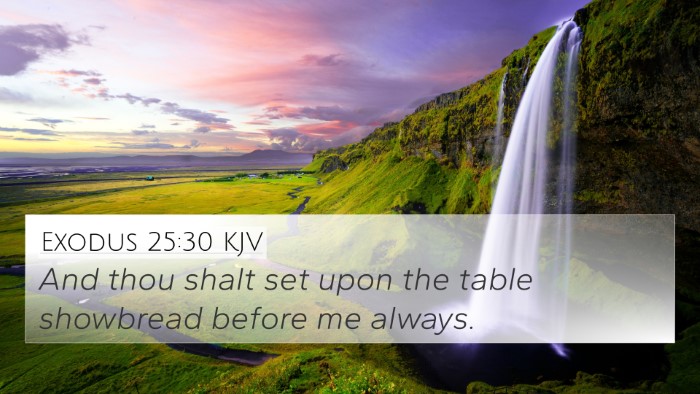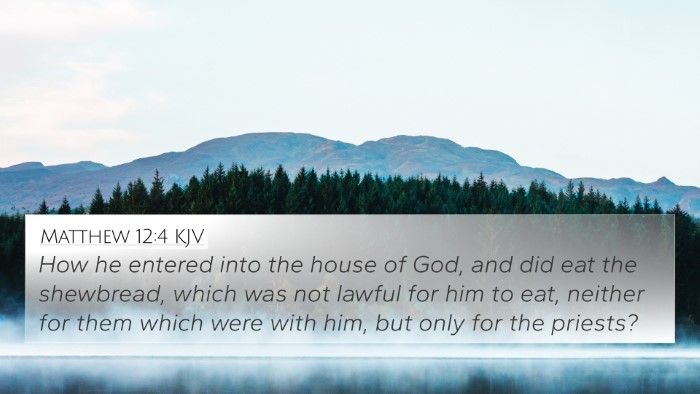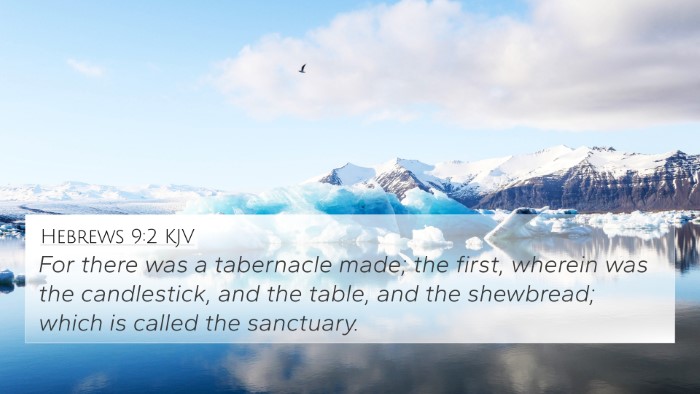Understanding Exodus 40:23
Exodus 40:23 states: “And he set the bread in order upon it before the Lord; as the Lord had commanded Moses.” This verse occurs at the conclusion of the instructions regarding the tabernacle and emphasizes the importance of obedience to divine commands.
Meaning and Context
The context of Exodus 40 involves the culmination of God's instructions to Moses on constructing the tabernacle, a significant symbol of God's dwelling among His people. This particular verse refers to the placement of the showbread on the table, which was part of the sacred service within the tabernacle.
- Divine Instruction: Moses attentively follows God's commands, signifying the importance of adhering strictly to God's guidelines.
- Symbolism of Bread: The showbread symbolizes God's provision and fellowship with His people, reinforcing the theme of communal worship.
- Representation of Order: The phrase "set the bread in order" illustrates the necessity of organization in worship, reflecting God's character and holiness.
Insights from Public Domain Commentaries
Matthew Henry: Reflects on the obedience of Moses as being exemplary, noting that such attentiveness to God's commands is crucial for any leader. Henry emphasizes that the orderliness in worship is a reflection of divine order.
Albert Barnes: Highlights that the showbread was a continual offering and part of the Levitical service. Barnes suggests that this act is deeply rooted in recognizing God’s presence among His people.
Adam Clarke: Brings attention to the connection between physical actions and spiritual significance, clarifying that the act of setting the bread was more than ritual; it was part of a covenant relationship with God.
Bible Verse Cross-References
Exodus 40:23 connects with several significant verses throughout Scripture. Here are some key cross-references:
- Leviticus 24:5-9: Discusses the preparation and presentation of showbread, further illuminating its role in Israel's worship.
- Numbers 4:7: Provides context about the covering and handling of the table of showbread, showcasing its sacredness.
- John 6:35: Jesus refers to Himself as the “bread of life,” which ties back to the symbolism inherent in the showbread of the Tabernacle.
- Revelation 2:17: Mentions the hidden manna, connecting the Old Testament bread with New Testament promises.
- 1 Corinthians 10:16: Addresses the communion of believers in relation to the bread, linking to the significance of sustenance in worship.
- Matthew 4:4: Jesus quotes Scripture emphasizing that man does not live by bread alone, connecting physical and spiritual nourishment.
- Hebrews 9:2: Mentions the table of showbread as part of the elements of the Holy Place, linking it to Christ’s ministry as the High Priest.
Thematic Bible Verse Connections
This verse also opens up discussion on broader themes, enhancing the understanding of biblical connections:
- Worship and Obedience: The repeated Biblical theme of following God’s commands as seen in Deuteronomy 6:24-25.
- God’s Provision: Related to Psalm 37:25, emphasizing reliance on God for sustenance.
- Communal Aspect of Worship: As expressed in Acts 2:42-47, reflecting the early church's dedication to fellowship and breaking bread.
Cross-Referencing Biblical Texts
To effectively use and understand cross-references, consider various methods for exploring these connections:
- Bible concordance: Utilize to find similar keywords or themes.
- Comprehensive Bible cross-reference materials: Adjust study habits with guides focusing on thematic connections.
- Inter-Biblical dialogue: Engage with connections between Old and New Testament passages to enrich understanding.
Conclusion
The insights provided by Exodus 40:23 illustrate not only the importance of physical acts in worship but also link to larger theological themes surrounding God's provision and ongoing relationship with His people. By studying cross-references and utilizing various biblical study tools, believers can deepen their understanding of scripture as they seek to interpret God’s word in fullness.
